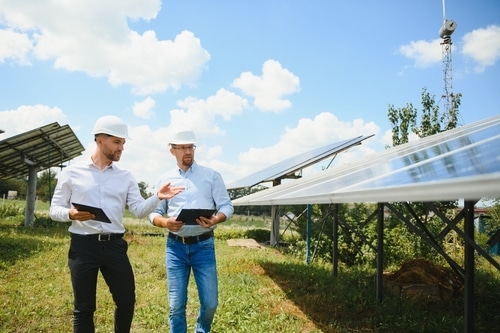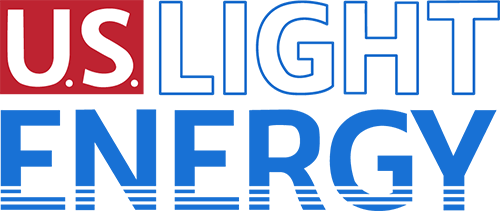
Solar farms have the potential to provide clean, renewable energy for several years with minimal maintenance. In fact, some solar farms from the 1980s are still going strong. With the right design, installation, and care, solar developers can provide community solar farms that last for decades and then some.
What is the Typical Life Expectancy of a Solar Farm?
When solar developers design solar farms, they factor in the life expectancy of the solar arrays to help determine the initial cost, maintenance, and expected energy output. Solar panels are designed to last twenty-five to thirty years on average. The physical components of solar panels make them quite durable. Solar panels can withstand external conditions, such as severe wind, rain, or debris. While a solar panel won’t completely fail after this timeline, it will begin to see a reduction in power production. Sunlight exposure, humidity, and temperature changes ultimately wear down solar production capabilities. The drop in energy production is known as the degradation rate. A solar panel’s degradation rate measures the speed at which it loses its efficiency and energy output over time. Typically, most solar panels experience a yearly degradation rate of 0.5%. For a solar panel that is twenty-five years old, the degradation rate would be about 87.5% of its original output level. Even though degradation is inevitable, solar technology continues to improve the durability of solar panels while reducing the degradation rate.
What Affects Solar Farm Life Expectancy?
While highly durable, a few factors can affect a solar farm’s life expectancy.
Quality
The quality of the solar panels can be the biggest factor in determining the life expectancy of a solar farm. Solar panels have three classifications: Tier One, Tier Two, and Tier Three.
Tier One solar panels have a slower degradation rate—only 0.3% per year. Tier Two has a 0.5% annual degradation rate, while Tier Three yields a 0.8% yearly rate. While Tier One solar panels may offer the best efficiency, they also have the highest upfront cost. Fortunately, the production value will outweigh the initial cost over time.
Installation
It’s important to work with solar professionals when installing a solar farm. They can ensure panels are properly mounted, installed, and wired for the most efficient output. Otherwise, solar panels could degrade faster.
Climate
While solar panels are designed to withstand the elements, they can still be affected by extreme heat, humidity, wind, and temperature fluctuations. Excessive heat can cause solar panel materials to break down much faster than in colder climates. Likewise, high winds, heavy rains, and hail can damage solar panel components, causing them to accelerate their degradation rate.
Lack of Maintenance
While solar arrays are generally “maintenance-free,” it’s still important to conduct regular check-ups. For instance, wind can blow debris onto the solar panels, causing them to be blocked from sunlight. Also, the panels can become chipped or scratched from animals climbing on them or from debris. Nicks and scratches can invite water inside the solar panels, further degrading them.
3 Tips on How To Extend Solar Farm Lifespan
Keep Them Clean
Keeping the solar panel surfaces free of debris, including pollen, dust, or bird droppings, will allow them to absorb the most sunlight possible. Depending on the area, they may need to be cleaned weekly or every other month. Solar panel guards can be added to keep animals off the solar panels. Also, removing trees or shrubs nearby eliminates the possibility of shade and prevents the chance of leaves or limbs being blown onto the panels.
Conduct Regular Maintenance
Observing a regular maintenance schedule will help solar panels to remain efficient and effective. Along with solar panels, checking inverters, meters, and other electrical components is important. Tracking electric bills can also provide evidence of a malfunction. For instance, if solar panels are less effective after heavy rain, it could indicate an electrical issue. Physical checks on the solar equipment could also illuminate exposed wiring or an unsecured racking.
Enlist the Help of Solar Developers
Solar developers handle all stages of a solar farm, including design, installation, and maintenance. Their process ensures that a solar farm can meet production needs efficiently for as long as possible. While solar panels may last for twenty-five to thirty years, other elements, such as inverters, may last only ten years. Solar professionals know how to stay ahead of equipment maintenance. With the right solar developer, a solar farm can produce sustainable, high-quality energy efficiently for decades.
US Light Energy Community Solar
US Light Energy is a New York-based distributed generation energy development company specializing in Community Solar facilities and renewable energy solutions. With over thirty years of experience, Community Solar Farm development is one of our specialties. If you’re interested in developing a solar farm, leasing your land, or subscribing to Community Solar, we’d love to hear from you! Contact us today to learn how you can contribute to sustainable energy. US Light Energy is leading the charge for a new generation.
